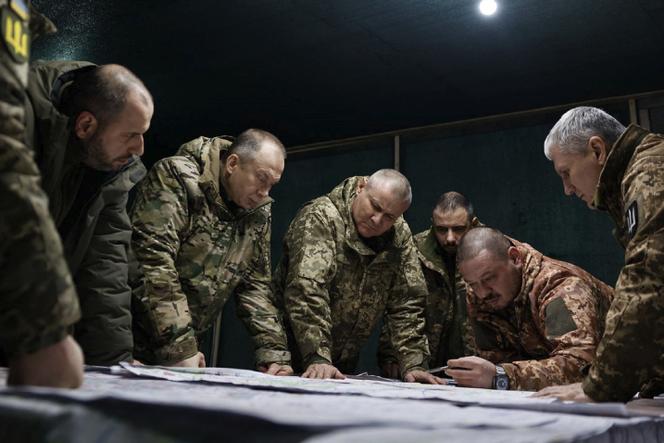


The change of stance is official. Three months after the failure of its counter-offensive launched with great hope in June 2023 but which broke down on Russian fortifications along the front line, Ukraine has resolved to lower its ambitions. "We have moved from offensive action to a defensive operation," said the new commander-in-chief of the Ukrainian armed forces, General Oleksandr Syrsky, in a short interview broadcast on February 13 by the German channel ZDF, almost two years after the launch of Moscow's "special military operation."
The Ukrainian army has little choice. The density of Russian minefields – up to five explosive devices per square meter, up to 15 to 20 kilometers wide – has made a mechanized breakthrough illusory, at least with the breaching equipment currently available to Kyiv.
Similarly, the thousands of observation drones that fly over the front line every day have, according to the military, made the battlefield "transparent," preventing any concentration of forces. As soon as vehicles or troops are grouped together, they are targeted by artillery or hunted down by explosive drones.
Above all, Kyiv's army is facing a serious ammunition crisis. In the absence of an agreement in the United States Congress between Democrats and Republicans, the US has not delivered shells and rockets to Ukraine since the beginning of the year, and Europeans are still struggling to revive their arms factories. To make up for their lack of artillery, Kyiv's army does make extensive use of so-called "FPV" (First Person View) drones, which are remotely piloted with immersive goggles and are therefore highly accurate, but they are not enough to make up the difference with Russia.
According to analysts, the "fire ratio," which measures the difference in the volume of artillery fire between two belligerents, is now one to 10, or even 12, in Russia's favor. "The Ukrainians can't hold out with such a ratio without losing a lot of men. It's more reasonable for them to fall back on defensive positions that are valued," said Stéphane Audrand, international risk consultant and reserve officer.
This "upgrading" of defenses – the military term for fortifying lines with trenches, prefabricated bunkers, mines and anti-tank devices – is something the Ukrainians have been working on since the start of the winter, at breakneck speed in the face of Russian pressure. In the east of the country, in the Donetsk oblast, they are building a network of forts protecting each other. Further north, in the Kharkiv oblast, and south in the Zaporizhzhia region, at least two lines of defense are being built around urban centers and strategic axes. "Digging for protection is a constant feature of warfare. The Ukrainian conflict is no exception, despite all the technology deployed," said a French military source.
You have 72.16% of this article left to read. The rest is for subscribers only.
